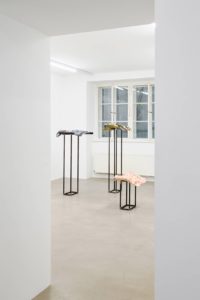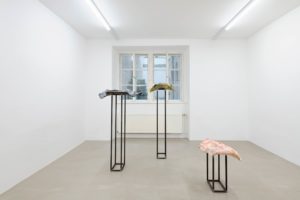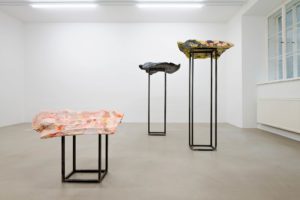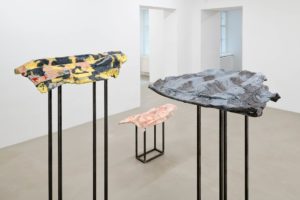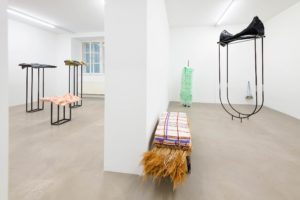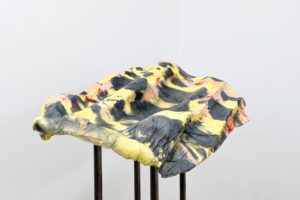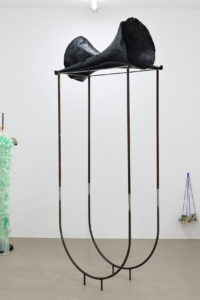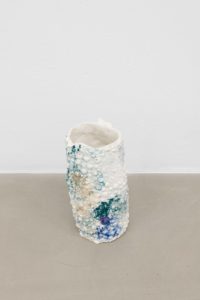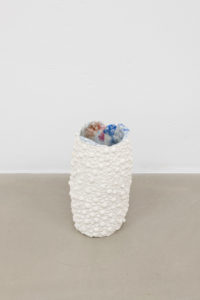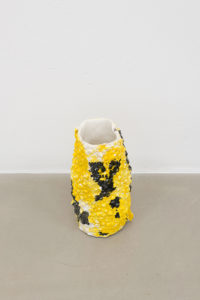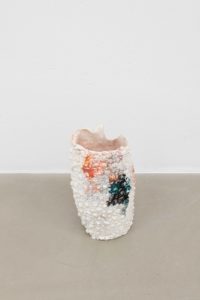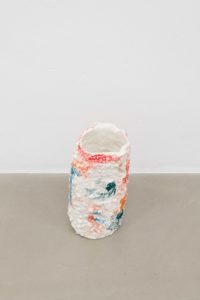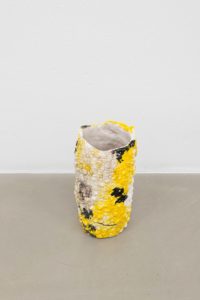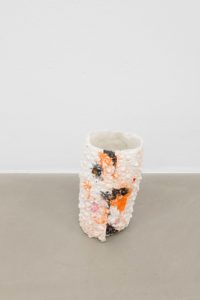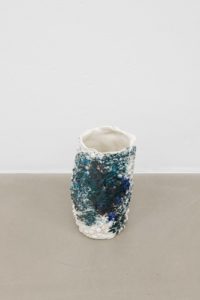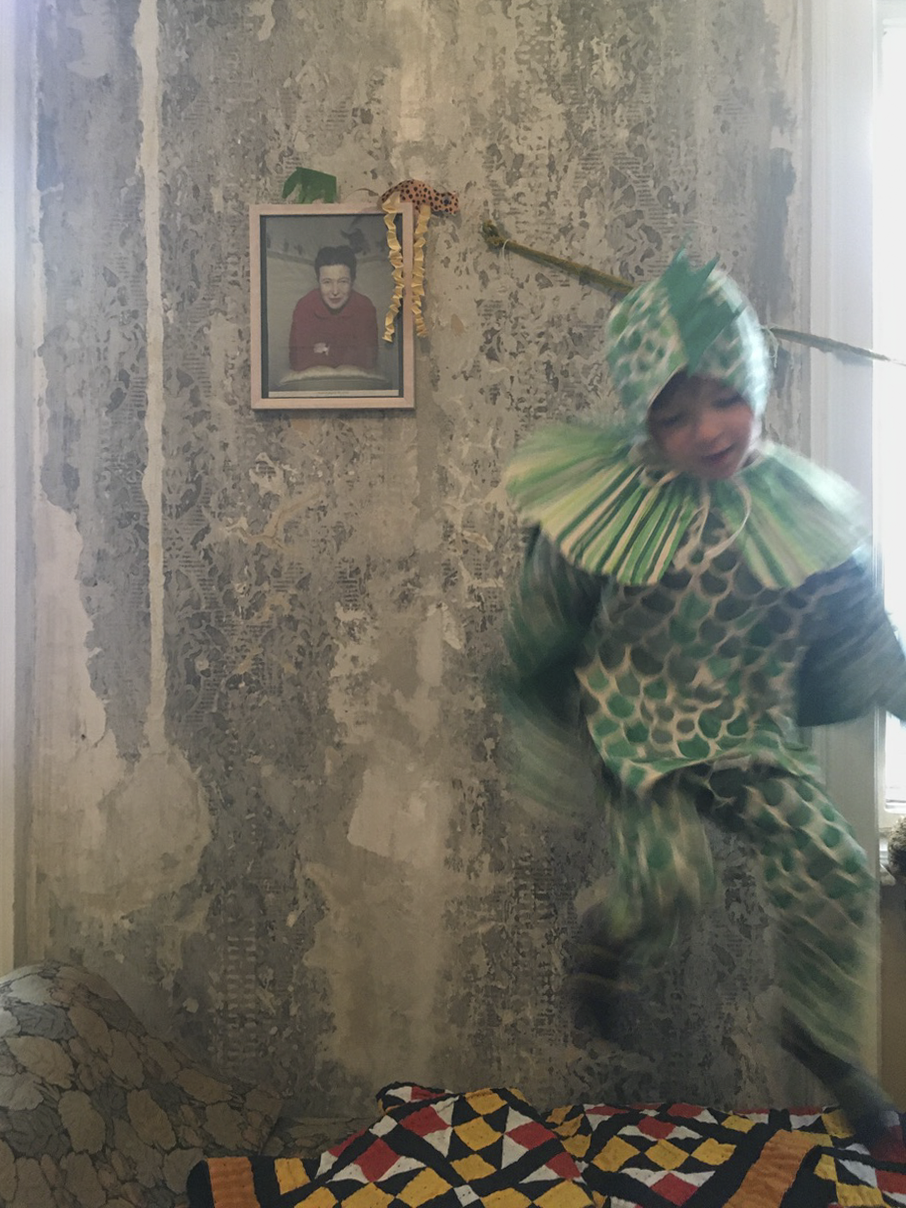
We cannot live without objects. The books, records, saddles from Morocco or Beirut, that carry us and our objects, loudspeakers from Karachi, lamps, chairs, sofas, and various vessels or frames, make us. But we rely on objects in different ways. Some of us need objects to cohere with our inner worlds and their landscapes, others find the objects of the world to be burdensome and need to find relief from them.
We are sitting on a train passing through the Dolomites, spiky mountains that peak up like craggy meringues. A journey shows us a lot. Paths can be wooded, becoming overgrown and leading to a dead end, or they are cleared, tunneling through mountains. The Dolomites remind me of a friend who I cannot reach because we pass but miss each other, perhaps because we rely on objects in opposing ways. We become vessels that the other can simply fill with their content, a liquid projection, a fantasy.
Life keeps moving along this road, along all the roads, with each step forward it moves through its antithesis. During the last two years we exchanged these roads and broad horizons of far-away adventures for the contours of our homes. The walls and doors and ceilings became the tightly wound borders of our worlds. We became architects of these dwellings, recalling the things, stories and memories that we are made of and building them again. We were forced to see how our most immediate environments mediated the identity between our wishes and satisfactions.
Fairgrounds provide illusions. In our romantic idea of fairgrounds, we seek and find thrills, and we lose ourselves. Michael Balint described funfairs as so universal that they must respond to essential human needs. In fairgrounds and circuses, we can experience the pleasures of dizziness, hallucination, vertigo, aggression and loss of stability. We can see the seemingly impossible in magic tricks. For Balint the fairground provides the location from which to experience the pleasures of regression, of chance encounters, of winning and losing, of gambling with slot machines, of peepshows, of giddiness. We can eat sticky and sweet foods, candy floss or fried dough oozing with sugar and fat. The world becomes a stage, and the fairground or circus becomes a world. They are places where routine is broken, and rules cease to apply. This kind of place allows us to find reward in excess, or in aggression and regression to childhood states, and to change the meaning of the world.
The saddle that was mounted on a donkey was carried on the back of the artist from Morocco to Vienna. It was investigated and repurposed. It now sits multiplied on steel legs. We are allowed to wear the saddle and potentially carry the donkey on our backs. The objects of the past, that the present designates as past but are not really past, are combined with things of the present. They are molded, cast, painted, stitched, they are hardened or softened, their materials are exchanged to create an architectural poetics, a homescape, ruled by a poetics of reproduction. Modernism’s ceaseless search for the new became fixed, integrated, and canonized. Johanna Magdalena Guggenberger’s repurposing shows us a way to recast modernism’s margin to include the untimely forms that ran and run continuous with the present, that were neglected and discarded, useless and abject. These forms are not intent on the new, but act as telescopes of time, transporting us to varied modes of production; they are tangible and sensual, recovered through a reproduction of poetics and a poetics of reproduction. The homescape is akin to a fairground, should we wish to repurpose the world along a poetic line.
Rose-Anne Gush
